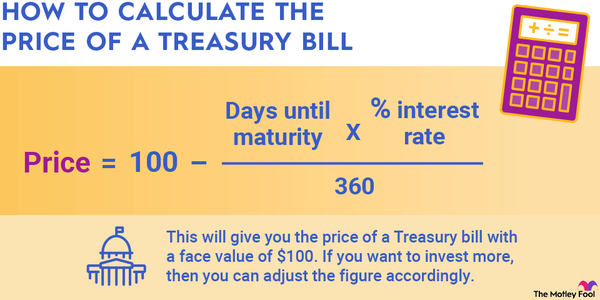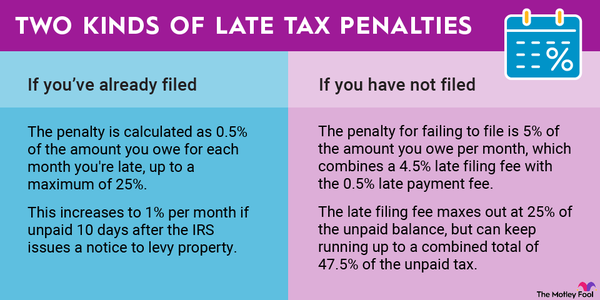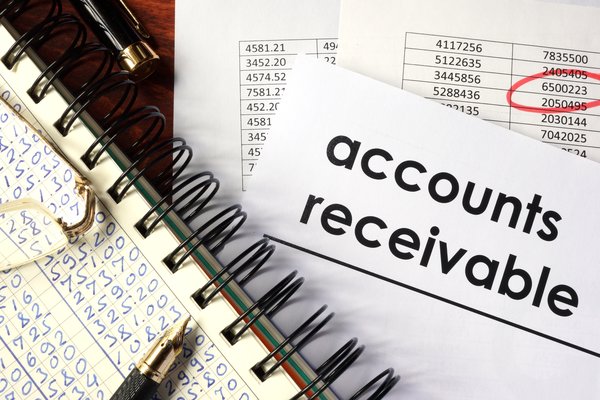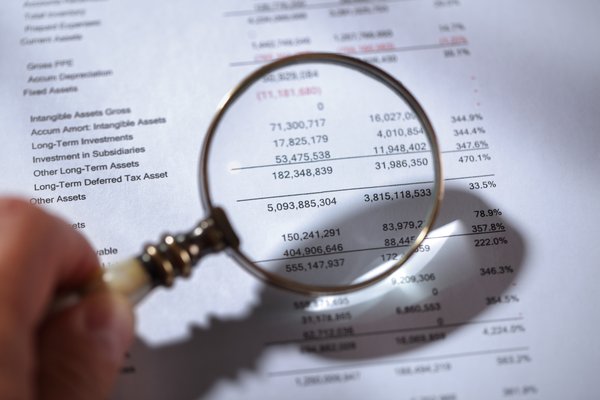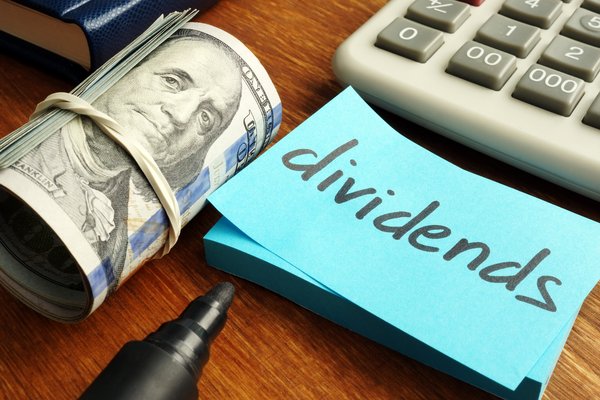Investors do a lot more math than you might expect, especially when it comes to financial calculations. If you don't understand how the math works during earnings season, you'll never be sure your investment is doing what it should. That's why we've put together this short article about common financial calculations you should know.

Formulas
Here are some calculations that we think are very important to understand.
1. Inflation
The inflation rate can describe how much prices are changing for almost anything around you. Often, groceries, gasoline, and housing are big headliners when inflation is high, but the word is also used in a broader sense to describe the condition of the economy.
There are several ways to calculate inflation, but the simplest is to take an item's most recent price and compare it to the price of the same item at an earlier time. Again, this can be a group of items or just one item; it doesn't really matter.
For our example, let's pretend we're talking about a carton of eggs that was $3 in 2020 and is now $5 in 2024. The formula looks like this:
Inflation rate = ((Y-X)/X) * 100, where Y is the price of eggs in 2024, and X is the price of eggs in 2020.
Inflation rate = (($5 - $3) / $3) x 100
Inflation rate = ($2 / $3) x 100
Inflation rate = (0.667) x 100
Inflation rate = 66.7%
2. Price-to-earnings ratio
The price-to-earnings (P/E) ratio tells you how much money a company is making compared to its stock price. This can help you determine whether a stock is a good buy or is undervalued for a reason. Once armed with a P/E ratio, you'll need to compare your company to its peers to determine how it stacks up in this regard. This is by no means a stand-alone metric. You should investigate a stock further if the P/E ratio checks out.
A simple P/E ratio is calculated by dividing a stock's price by its earnings per share (EPS). Both of these numbers can be plucked out of public information. The price comes from your favorite stock ticker and the EPS from the company's income statement.
Then, simply put them together.
If XYZ, Inc., is trading for $100 today and its EPS is $7.50, the formula looks like this:
P/E ratio = stock share price / EPS
P/E ratio = $100 / $7.50
P/E ratio = 13.33

Your next step would be to compare this figure to peer companies to see how they're doing as an industry. The 13.3 figure might be great, or it could be really high. Without looking at similar companies, you'll never know.
3. Dividend payout ratio
If you're a dividend investor, it will pay, well, dividends to understand the dividend payout ratio. This is the percentage of dividends paid out compared to a company's earnings. Like the P/E ratio, it's important also to compare this figure to peer companies before you make a final decision on an investment. But it can also be important to look at how this ratio is changing as the company ages, so you know whether the dividend payout is growing, shrinking, or staying the same.
You can calculate the dividend payout ratio by dividing the dividends paid over a set period of time by the earnings over that same period. Generally, this is done annually to help iron out any seasonal bumps, but you can do it quarterly or monthly, too.
Let's pretend our real estate investment trust, ABC Holdings, pays a total of $5 million in dividends each quarter and earns $25 million each quarter.
Dividend payout ratio = (total dividend payment / total earnings) x 100
Dividend payout ratio = ($5 million / $25 million) x 100
Dividend payout ratio = 0.2 x 100
Dividend payout ratio = 20%
So, 20% of the company's earnings are returned to investors as dividends. Generally, that might not be great for a real estate investment trust (REIT), but it could be a different story in other industries. You definitely want to see that figure higher, but not too high because a very high number can also spell trouble.
You can also do this calculation by replacing total dividends and total earnings with dividends per share and earnings per share since the ratio is exactly the same.
4. Return on assets
Return on assets is another financial ratio that can help you determine a company's profitability. This time, however, profitability is set against the company's assets. Here, we're looking at how efficiently the company uses assets to generate revenue over time. You want this number to be high, but you also want it to be somewhat in line with its competition.
Return on Assets (ROA)
To calculate return on assets, you'll need to know net income and total assets. From there, it's as simple as a little division. Let's say XYZ, Inc., made a net income of $10 million from $1 million in assets.
Return on assets = (net income / total assets) x 100
Return on assets = ($1 million / $10 million) x 100
Return on assets = 0.10 x 100
Return on assets = 10%
5. Compound interest
Compound interest is a great way to make -- or spend -- money relatively quickly. Many different types of loans charge compound interest, including credit cards and some lines of credit. It's really important to understand how that's calculated so you can make the most of your borrowing dollars, but it's important to understand for your savings, too.
To figure out your compounded interest, you'll need to know a few things about the loan or savings account: the principal (p), the annual interest rate (i), the number of compounding periods (n), and how many years (t). Let's say you borrowed $1,000 at an 8% rate that compounds monthly, and you want to know how much interest you'll pay in a year. The equation to determine the interest you've paid is:
Compound interest = p [(1 + (r/n))^(nt) - 1]
Compound interest = $1,000 [(1 + (0.08/12))^(12*1) - 1]
Compound interest = $1,000 [(1 + (0.0067))^(12) - 1]
Compound interest = $1,000 [(1.0067)^12 - 1]
Compound interest = $1,000 [1.0834 - 1]
Compound interest = $1,000 [0.0834]
Compound interest = $83.43
6. Cash flow
There are several ways to calculate cash flow, but the free cash flow (FCF) formula is probably the most common you'll see. This formula essentially calculates how much cash flow you have to actually spend on things you need. As an investor, it also tells you how much your company has to invest in the things it needs to grow and prosper.
Cash Flow
The simplest way to calculate FCF is by using cash flow from operations (from the cash flow statement) and subtracting your capital expenditures. That looks like this:
FCF = operating cash flow - capital expenditures
So, if your operating cash flow is $100,000 and your capital expenditures total $65,000, it looks like this:
FCF = $100,000 - $65,000
FCF = $35,000
7. Breakeven equation
The break-even point (BEP) equation can be used to determine just how much product or sales volume is required to cover production costs. This is useful for investors and business owners, since you want to know the point in production that your company becomes profitable. This equation is often part of a break-even analysis.
You'll need to know your fixed costs (f), your variable costs per unit (v), and the price per unit (p) that you'll be charging. If your item sells for $100, the total fixed costs are $20,000, and the variable costs are $60 per unit, that looks like this:
BEP = f / (p - v)
BEP = $20,000 / ($100 - $60)
BEP = $20,000 / $40
BEP = 500 units
8. Simple interest
If you're trying to figure out how much money you'll make off your high-yield savings account or certificate of deposit (CD), you need to use the simple interest formula. This is a really easy way to see how your money can grow.

The three components of simple interest are principal (p), interest rate (i), and term in years (t). Let's assume you have $25,000 you want to put into savings for two years and that you'll earn 5% during that period.
The equation looks like this:
Simple interest = p * i * t
Simple interest = $25,000 * .05 * 2
Simple interest = $2,500
9. Profit margin
Why you'd want to know your profit margins is pretty self-explanatory: When you know how much you're making, you can sometimes use that information to make even more money. You can also compare your profit margins today to those in the past to see whether you're doing better or worse.
A very simple measure of profit margin is the gross profit margin. You'll need to know the cost of goods sold (COGS) -- or the expenses directly associated with the product you're manufacturing, such as wages and materials costs,-- and net sales in dollars. So, if your COGS is $50,000 and your net sales are $75,000, it looks like this:
Gross profit margin = ((Net sales - COGS) / Net sales) x 100
Gross profit margin = (($75,000 - $50,000) / $75,000) x 100
Gross profit margin = ($25,000 / $75,000) x 100
Gross profit margin = 0.33 x 100
Gross profit margin = 33%
10. Accounting equation
The accounting equation is technically an equation, but it doesn't really produce an answer as such. It ensures that the balance sheet remains balanced and demonstrates that a company's total assets are equal to the sum of its liabilities plus shareholders' equity.
Let's assume that assets are $170 billion, liabilities are $120 billion, and shareholders' equity is $50 billion. The accounting equation looks like this:
Assets = liabilities + shareholders' equity
$170 billion = $120 billion + $50 billion
$170 billion = $170 billion
That's how it works -- both sides are balanced.
Related investing topics
Why use them?
Using these financial equations
Financial equations are vital for any kind of investor, even if you simply keep your spare cash in a high-yield savings account. Understanding these basic equations can help you better choose good investments and see when they're not so great -- and why.
FAQ
Common financial equations FAQ
What are the basic financial equations?
The 11 basic accounting formulas are the accounting equation, current assets, net fixed assets, total assets, current liabilities, shareholders' equity, total liabilities and equity, gross margin, operating expenses, income from operations, and net income.
What formulas do you use in finance?
Some common formulas you might use in finance include future value, simple interest, compound interest, discounting, sinking fund factor, and amortization.
What is the most famous finance formula?
The Black-Scholes equation is likely the most famous equation in finance and an incredibly important one since financial theory largely relies on it. It estimates the theoretical value of investment instruments while taking into account the effects of time and other risk factors.
What is the key financial formula?
The key ratio is any financial ratio that is particularly good for representing a company's finances in relation to its competitive peers. So, this can be literally any formula, provided it meets that criteria. A few common formulas used as key ratios include the P/E ratio, return on assets, return on equity, and the working capital ratio.














